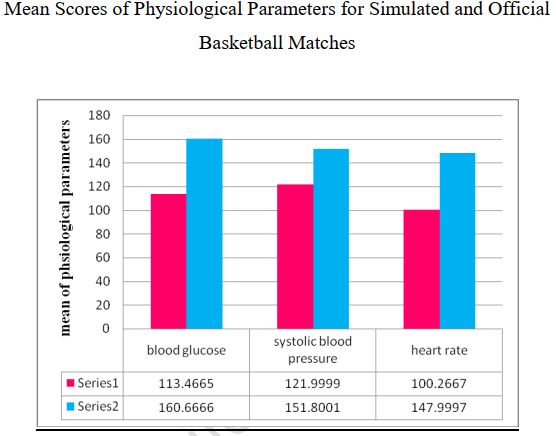COMPARATIVE STUDY OF SIMULATED AND OFFICIAL BASKETBALL MATCHES ON SELECTED PHYSIOLOGICAL PARAMETERS
Abstract
The purpose of this study was to compare the physiological responses between simulated and official basketball matches. The physiological parameters chosen were heart-rate measured by counting beats at the radial artery(beats/min), blood-pressure by sphygmomanometer(mm Hg), peak flow rate by peak flow meter (lit/min) and blood glucose level was measured by glucometer respectively. Five female basketball players of L.N.U.P.E. team were purposively selected as the subjects for study. The measurements of Physiological Variables were first taken in Simulated Matches during their practice session and then in Official Matches during their west zone inter-varsity competition. Pre data were collected after pre match warm-up and post after the end of match. The data collected in the different simulated and official basketball matches were analysed by ANCOVA for each variable separately. The results from ANCOVA showed significant differences for Heart-rate, Systolic blood pressure, and Blood Glucose level whereas no significant differences were found in Diastolic blood pressure and Peak flow rate between Simulated and Official Matches.The results of this study showed a greater magnitude of Heart-rate, Systolic blood pressure and Blood Glucose response after Official Matches as compared with that after Simulated Matches confirming the hypothesis that a real competition generates a greater response than a training condition.
Downloads
References
Crisafulli A, Melis F, Tocco F, Laconi P, Lai C, Concu A. External mechanical work versus oxidative energy consumption ratio during a basketball field test. J Sports Med Phys Fitness 2002: 42: 409–417.
Guevel, A Maiseeei, O., Pro, E., Doubles, J.J. & Marini, J.F.O (1999). “Heart-rate and bloodlactate responses during competitive Olympic boardsailing.” Journal of Sports Sciences, 17:135141
Hoffman JR, Maresh CM. Physiology of basketball. In: Garrett WE Jr, Kirkendall DT, eds. Exercise and sport science. Philadelphia, PA: Lippincott Williams & Wilkins, 2000: 733– 744. Williams & Wilkins, 2000: 733–744.
Hoffman JR, Tenenbaum G, Maresh CM, Kraemer WJ. Relationship between athletic performance tests and playing time in elite college basketball players. J Strength Cond Res 1996: 10: 67–71.
McInnes SE, Carlson JS, Jones CJ, McKenna MJ. The physiological load imposed on basketball players during competition. J Sports Sci. 1995;13(5):387–397.
Moreira, A, McGuigan, MR, Arruda, AFS, Freitas, CG, and Aoki, MS. Monitoring internal load parameters during simulated and official basketball matches. J Strength Cond Res 26(3): 861–866, 2012
Menzel, K. L. 1997. The Effects of Various Exercises on the Cardiovascular System. Research Project University of Texas, Austin.
Sharma, R. K. , Nigam, A. K. “Relationship between Competitive Performance and Selected Physiological Parameters of Elite Male and Female Gymnasts.” Journal of Exercise Science & Physiotherapy, vol.6, No.1:43-49,2010
Smit. RF, “Physiological demands during rugby union match and practice session.” Magistor Artium.















